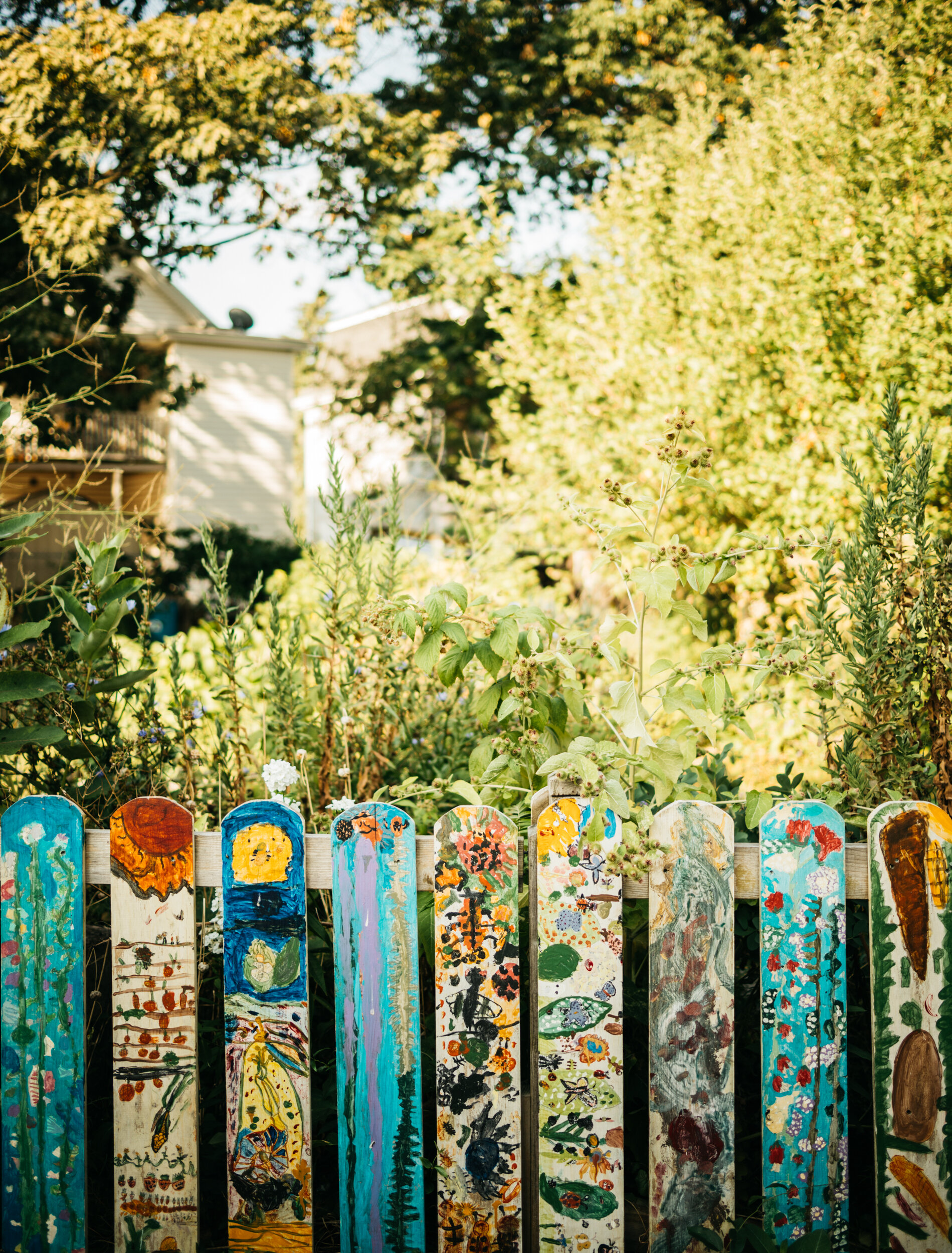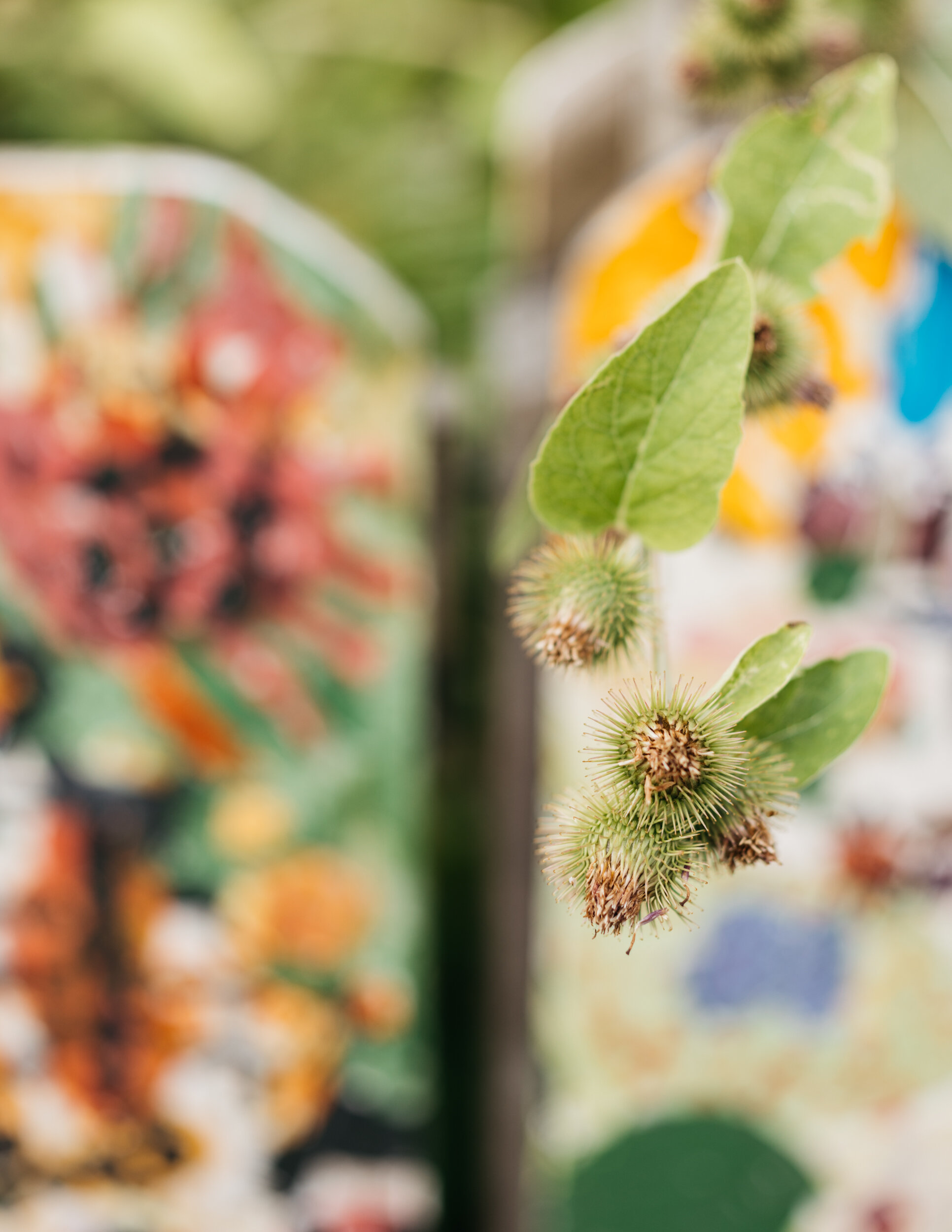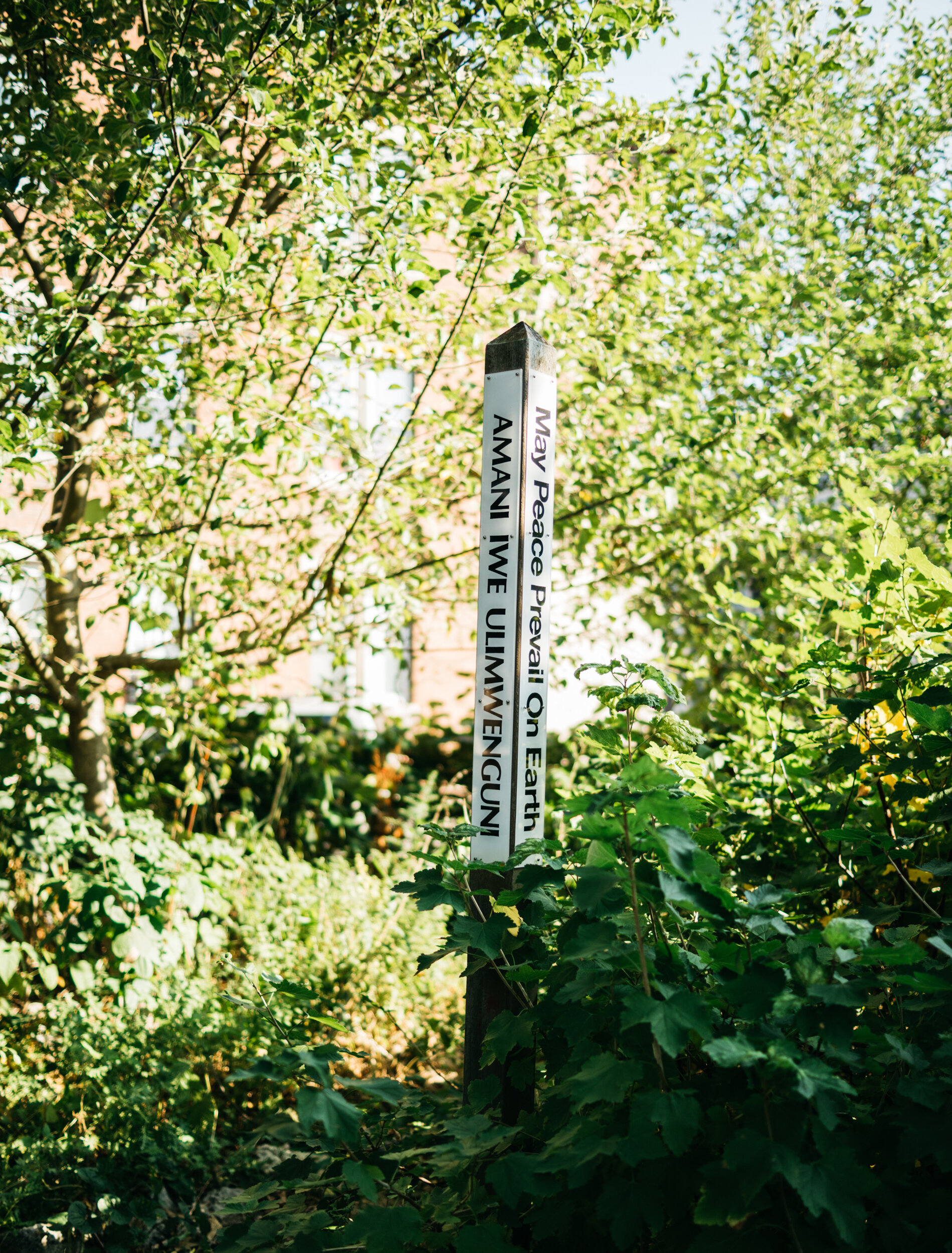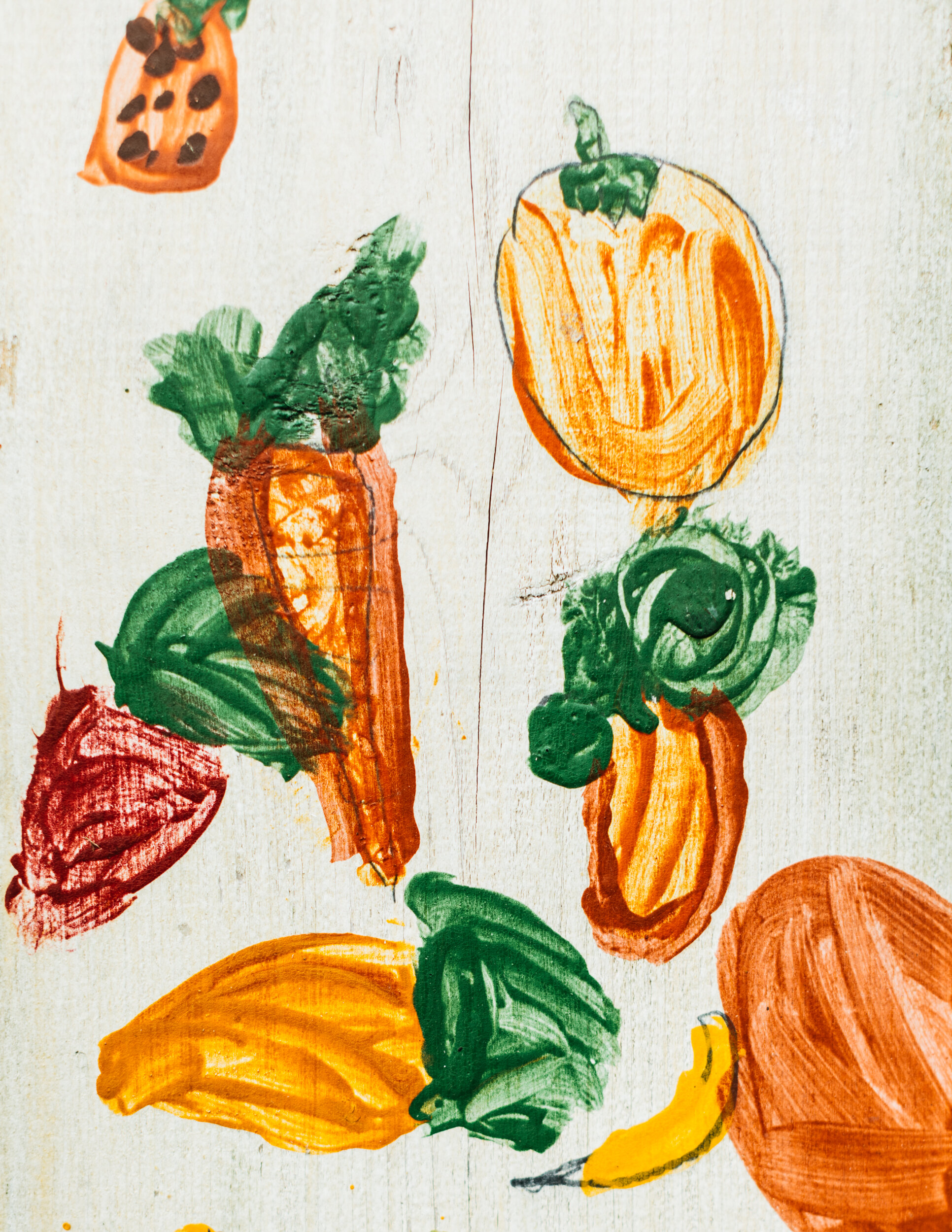Good Things Grow in Forests: Boston Food Forest Coalition Nourishes Neighborhoods As Well As Bellies
Photos by Michael Piazza
Community gardens, those mini-oases of abundance lovingly tended by city dwellers, have sprouted up all over the Boston area in the past decades. The nonprofit Boston Food Forest Coalition is looking to make another kind of shared garden a thriving part of Boston’s urban landscape: food forests.
“A food forest is a very poetic concept,” says Orion Kriegman, the group’s executive director. “It’s not a traditional community garden. It’s not an urban farm. And it’s not an urban wild or a park. It’s sort of all of those things.”
Agriculturally speaking, a food forest is an ecological approach to growing built around perennial food-producing plants including trees, shrubs, berries and herbs.
“We’re trying to mimic systems that we see in nature about how plants enjoy and benefit and have greater health when they grow in community with other plants. It’s how you can get a lot of production in a small area if you’re willing to diversify what you’re producing,” Kriegman says.
A typical food forest is made up of several different levels of perennial plantings—fruit and nut trees at the top; berries, shrubs and vines in the middle; and a lower level of herbs, edible perennials and annuals. Together, they form an interconnected and productive whole.
In many ways, urban food forests represent a return to the orchards that were part of the Boston landscape for centuries. The eight food forests managed by the Boston Food Forest Coalition bring green space and food production back to unused plots of land in neighborhoods including Mattapan, Jamaica Plain and Dorchester.
But as Kriegman tells it, “We grow a lot more than food.”
Neighborhoods and the people in them are the core of Boston Food Forest Coalition projects. Unlike a community garden where plots may be assigned to individual residents who reap the produce, most of the food produced in food forests is available to everyone. The food forest space is open to the entire neighborhood. When berries or apples are ripe, anyone who visits is welcome to pick them. When someone needs herbs for cooking or medicine, they can harvest them from the forest.
With a combination of produce to pick, spots to sit and talk with neighbors and safe areas for kids to play, food forests serve very much as a neighborhood backyard. In addition to blueberries or medicinal herbs, you might also find a sandbox, a gazebo or a gas grill waiting to be shared.
“People are really using the space. The kids play. A lot of people come together to work, and we get things done. It’s really great to see three generations of families out here,” says Carolyn McGee, a Boston Food Forest Coalition board member and neighborhood steward for the Ellington Street Community Food Forest in Dorchester.
Ellington Street is one of the Boston Food Forest Coalition’s newest projects. The design of the Ellington Street forest is based on the idea of food as medicine, a concept that grew directly out of the neighborhood vision for the space. Each Boston Food Forest Coalition garden is unique to its environment and neighborhood, and created with significant input from the community.
The Ellington food forest features fruit trees including paw paws, apples, peaches and plums around the outside edges, raised produce beds in the center and an herb garden with the likes of feverfew, beebalm, rhubarb, yarrow, chamomile and thyme near the entrance. The herbs are grouped by their medicinal uses: support for immunity, heart health or the nervous system. They reflect the cultural traditions of neighborhood residents and were created with the input of a horticulturist.
Conversations about the Ellington Street food forest began years before the official launch of the space, which previously was a pair of empty lots filled with scrub trees, old appliances, mattresses and a few garden plots.
Food Forest Coalition board member Othneil “Utah” Uter is one of the neighborhood gardeners who was inspired to transform the lots into a permaculture garden. Uter is a lifelong gardener who grew up in Jamaica and has lived in Dorchester for 15 years. He decided to replace the maples in his own backyard with fruit trees. Others in the neighborhood took notice.
“Kids would walk by and say, ‘Could I get a couple peaches?’ I’d say, ‘Sure, how about taking a strawberry plant or something home?’ I thought, ‘If only there was a place where they could pick this stuff,’” Uter says.
He asked around about what was going on with the empty lots and discovered that one was owned by the city and the other was simply vacant. Uter and others in the neighborhood began the process of cleaning up both spaces and addressed details about ownership later. “From there, I tried to bring it up to the next level,” Uter says.
Much of the early effort focused on getting the neighborhood on board.
“We went around and said, ‘Hey we’re building this site. Are you guys interested in getting a raised bed?’ And they said, ‘That dump over there? I don’t know.’ Once we cleaned it up they saw the difference and said, ‘Yeah, we’ll take a raised bed. It doesn’t look so bad over there,’” Uter says.
McGee has also been with the garden since its inception. Like many involved with the garden, her roots run deep. McGee has lived in the area for more than 50 years. She grew up in the Ellington Street community and returned after graduating from college. Her parents were the first Black store owners in the neighborhood.
“I was there from ground zero almost when there was nothing but grass. We had to put down cardboard, coordinate getting chip wood put in. I was putting boxes on my car from a dumpster,” she says.
Preparing an urban site for permaculture planting takes significant work. While it starts with removing trash and clearing brush, preparing the soil for planting is the important “invisible” work, according to Kriegman.
That’s where the boxes McGee spoke about come into play. To prepare the soil, volunteers at Ellington Street covered the site with flattened cardboard boxes and mulch to smother any weeds and provide a fresh start for building raised beds. The approach, known as sheet mulching, is one of the oldest techniques for soil building. Soil compaction is also a significant challenge in urban spaces. After years of use and traffic, little life remains in the soil.
“A huge part of permaculture is saying that if the life in the soil is vibrant it’ll keep your plants healthy and you won’t have to do as much work,” Kriegman says. “We’re ecologically oriented, so we want to heal the land as it is.”
A great deal of volunteer work went into the Ellington Street site to reestablish microbial life and minimize the effects of contaminants like heavy metals and petrochemicals.
“When we were doing that, we were waving hi to people and were walking up with a clipboard to get their name and contact information. We were asking them, ‘Are you interested in gardening? What do you think should happen in this space?’ That created a whole list of people who are interested,” Kriegman notes.
Some three years after the vacant lots began their transformation, others in the neighborhood have been inspired to do their own backyard gardening. One property bordering on the food forest replaced their asphalt driveway with a vegetable garden. Volunteers from the food forest participated recently in a garden-raising for another neighbor across the street.
Thelma McClaren, longtime resident, co-founder of the garden and member of the stewardship team for Ellington Community Food Forest
While the neighborhood is essential to creating and maintaining the gardens, Boston Food Forest Coalition is the owner of the eight food forest properties. The coalition is a nonprofit community land trust, one of the only trusts in the state that takes on smaller urban sites with no expectation of generating revenue. The organization doesn’t sell produce from the forests or charge admission. The sites they take on may be too small or challenging for developers. The coalition works closely with the city, community organizers and other resources needed to make the projects work.
The Boston Food Forest Coalition was incorporated in 2015, but had its start a few years earlier as part of discussions in Jamaica Plain around creating new economic opportunities with more local spending and more democratic control and ownership of resources. Kriegman, who has a background in conflict resolution and urban planning, was part of those discussions. The concept for the food forest land trust grew out of enthusiasm for the intersection of the food justice movement and economic opportunities.
About 10 years ago, Kriegman had also been part of a project to clean up and convert an empty lot in his Egleston Square neighborhood into a guerilla garden. That garden became one of the coalition’s earliest projects, the Egleston Community Orchard. The plot, which is located near the Sam Adams brewery, is now an established garden with heirloom apple trees, a shady lawn area and a patio.
“It’s all stone soup in the sense of neighbors contributing,” Kriegman says on a tour. He points out cobblestones from a neighbor in the construction business, a shed constructed by another neighbor and a fence that had been colorfully painted by students at the nearby Mendell Elementary School.
Much has changed in the Egleston Square neighborhood in the past decade, according to Kriegman. “When this started, this was much more a neighborhood in neglect. This was not multi-hundred-thousand-dollar condos. That was a vacant lot. That was a vacant lot. This was a vacant lot.”
Even as neighborhoods embrace the concept of a shared food forest space, normal problems of city life crop up. Kriegman notes an incident where lilacs and grapevines in the Egleston orchard had been badly damaged by vandalism. Initially, those who had invested time and effort in the garden took it personally, but because of close relationships with neighbors, they were able to determine that the damage was caused by a youngster who was unsupervised and angry. They were able to talk with the family involved and get more of the story.
“When you demystify it, it’s less demoralizing. It just becomes yet another part of the social permaculture of a space that has to be engaged with. You can see, things just grow back,” Kriegman notes.
With social distancing during the COVID-19 pandemic, use of the gardens has changed this season: fewer kids playing, no group gatherings and permaculture education events switched to online. But the Ellington Street community hosted a socially distant garden tour earlier in the season and is planning an end-of-season celebration in the fall.
“I see people out there tending to their gardens and harvesting their veggies. We have a really strong crew. COVID hasn’t stopped us,” McGee says.
Kriegman adds that gardening is one of the activities you can actually do during quarantine. But all those involved with the food forest projects look forward to post-pandemic days when neighbors can again reap the full benefits of their gardens.
“This isn’t just a garden where people can come to harvest, it’s a garden where people can come to bond. There’s a lot of community building here. People are making friends. Children play. They learn about strawberries and different herbs. It’s really a learning, working garden for the community. It’s such a beautiful space. It’s so calm and peaceful and so healing. It’s our space and we’re so proud of it,” says McGee.
This story appeared in the Fall/Holiday 2020 issue.








